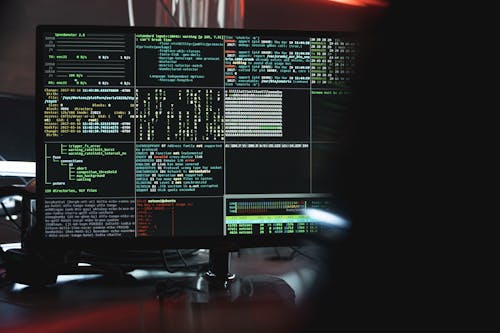
In 2025, as technology continues to advance, so do the tactics of cybercriminals. The digital world is no longer just a tool for convenience; it’s the lifeline of businesses, governments, and everyday users. However, with growing reliance on digital platforms comes the harsh reality: cybersecurity threats are evolving faster than ever.
Are you prepared for what’s coming? In this blog, we’ll uncover the most pressing cybersecurity threats in 2025 and equip you with actionable strategies to defend against them.
for consultation & cyber security services contact: https://goftechsolutions.com/contact
The Alarming State of Cybersecurity in 2025
The statistics are staggering. By 2025, the global cost of cybercrime is expected to reach $10.5 trillion annually, according to recent studies. From ransomware attacks to AI-driven phishing scams, the methods of cyberattacks have become more sophisticated and devastating.
If you don’t act now, you could become the next victim. Here are the key cybersecurity threats that you need to watch out for in 2025.
Also read about AI involvement in cyber security niche: https://weeklypakistan.com.pk/tech-software/hacking-ai-vulnerabilities-in-the-age-of-automation/
1. AI-Powered Cyberattacks
The Threat: Cybercriminals are now leveraging artificial intelligence to automate attacks and bypass traditional security systems. AI tools can mimic legitimate users, break passwords, and create highly convincing phishing schemes.
How to Defend Yourself:
- Invest in AI-Based Security Systems: Use AI to detect and respond to threats in real time.
- Train Your Employees: Educate your team about recognizing AI-generated phishing attempts.
- Enable Multi-Factor Authentication (MFA): Add an extra layer of security to prevent unauthorized access.
2. Ransomware 2.0
The Threat: Ransomware attacks are becoming more aggressive, targeting critical infrastructure, healthcare systems, and small businesses. These attacks not only encrypt data but also threaten to leak sensitive information if the ransom isn’t paid.
How to Defend Yourself:
- Regular Backups: Ensure all critical data is backed up securely.
- Endpoint Detection and Response (EDR): Use EDR tools to identify and isolate ransomware threats quickly.
- Zero-Trust Architecture: Implement strict access controls to minimize vulnerabilities.
3. IoT Vulnerabilities

The Threat: With the rapid growth of the Internet of Things (IoT), hackers have found new entry points. Connected devices like smart home systems and industrial IoT platforms are often insecure, making them easy targets.
How to Defend Yourself:
- Secure IoT Devices: Change default passwords and update device firmware regularly.
- Network Segmentation: Isolate IoT devices on a separate network.
- Monitor IoT Traffic: Use intrusion detection systems to flag suspicious activity.
4. Deepfake Scams
The Threat: Deepfake technology has advanced to the point where it’s being used to impersonate individuals in video and audio formats. These scams are often aimed at stealing money or sensitive information.
How to Defend Yourself:
- Authentication Protocols: Use advanced verification methods like biometric authentication.
- Awareness Campaigns: Train employees to identify deepfake scams.
- Invest in Forensic Tools: Deploy tools that can detect manipulated media.
5. Cloud Security Risks
The Threat: As more businesses move to the cloud, hackers are targeting misconfigured cloud storage and exploiting vulnerabilities in APIs.
How to Defend Yourself:
- Secure Configurations: Regularly audit your cloud environment for misconfigurations.
- Encrypt Cloud Data: Use end-to-end encryption for data stored in the cloud.
- Access Management: Implement strong identity and access management policies.
6. Insider Threats
The Threat: Whether malicious or accidental, insider threats remain one of the biggest cybersecurity challenges. Employees with access to sensitive data can become a significant risk.
How to Defend Yourself:
- Employee Monitoring: Use tools to monitor access and activities.
- Limit Access: Restrict sensitive data access to only those who need it.
- Training Programs: Educate employees about the consequences of insider threats.
7. Quantum Computing Threats
The Threat: While quantum computing offers immense potential, it also poses a risk. It can break current encryption methods, leaving data unprotected.
How to Defend Yourself:
- Post-Quantum Cryptography: Begin transitioning to quantum-resistant encryption.
- Stay Updated: Follow developments in quantum-safe security practices.
- Work with Experts: Collaborate with cybersecurity professionals to future-proof your systems.
The Cost of Inaction
Ignoring these threats can lead to catastrophic outcomes: data breaches, reputational damage, and even legal penalties. Don’t wait for a breach to happen—take proactive steps today.
How You Can Stay Ahead

- Adopt a Cybersecurity Framework: Use standards like NIST or ISO 27001 to build a robust defense system.
- Partner with Experts: Collaborate with managed security service providers (MSSPs) for 24/7 monitoring.
- Continuous Training: Cybersecurity isn’t a one-time task. Regular training ensures your team stays updated on the latest threats.
FAQs on Cybersecurity Threats in 2025
1. What are the top cybersecurity threats in 2025?
The top threats include AI-powered attacks, ransomware, IoT vulnerabilities, deepfake scams, and cloud security risks.
2. How can businesses defend against ransomware attacks?
Businesses can defend against ransomware by maintaining regular backups, using endpoint detection tools, and implementing a zero-trust approach.
3. Why are IoT devices vulnerable to cyberattacks?
IoT devices often have weak security protocols and are connected to the internet, making them easy targets for hackers.
4. What is quantum-safe encryption?
Quantum-safe encryption refers to cryptographic methods that are resistant to quantum computing threats.
5. How important is employee training in cybersecurity?
Employee training is critical. Many attacks, such as phishing and insider threats, can be mitigated by educating employees about cybersecurity practices.
